Causes of malfunctions of induction motors and methods for their elimination
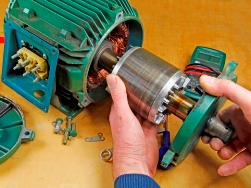 Asynchronous electric motors are more common than others in production and are often found in everyday life. With their help, various machines are driven: turning, milling, grinding, lifting mechanisms, such as an elevator or crane, as well as various kinds of fans and hoods. This popularity is due to the low cost, simplicity and reliability of this type of drive. But it happens that a simple technique breaks down. In this article, we look at typical malfunctions of squirrel-cage induction motors.
Asynchronous electric motors are more common than others in production and are often found in everyday life. With their help, various machines are driven: turning, milling, grinding, lifting mechanisms, such as an elevator or crane, as well as various kinds of fans and hoods. This popularity is due to the low cost, simplicity and reliability of this type of drive. But it happens that a simple technique breaks down. In this article, we look at typical malfunctions of squirrel-cage induction motors.
Faults can be divided into three groups: the engine heats up, the shaft does not rotate or does not rotate normally, it makes noise, vibrates. In this case, the engine housing can be completely heated or some separate place on it.And the motor shaft may not budge at all, not develop normal speed, its bearing may overheatand, make abnormal sounds for his work, vibrate ...
How to find out how much power a cable or wire can withstand
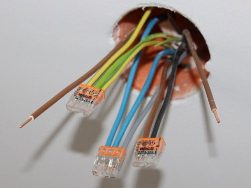 When connecting electrical appliances to the supply network, one of the main conditions is the selection of a cable or wire of suitable section. But sometimes it happens that you already have some kind of conductor, and you are not sure whether it is suitable for a specific task.
When connecting electrical appliances to the supply network, one of the main conditions is the selection of a cable or wire of suitable section. But sometimes it happens that you already have some kind of conductor, and you are not sure whether it is suitable for a specific task.
If you connect too much load on the cable, then it will warm up, and maybe even overheat. Because of this, the insulation will melt, which is dangerous with a short circuit, electric shock and fire. This begs the question: "how do you know how much power a cable or wire can withstand?". Let's figure it out! It is immediately worth noting that the cross-section and power of the cable are, in principle, not interconnected. For the conductor, the permissible continuous current plays a decisive role. These values are described in the PUE section 1, chapter 1.3. The fact is that if it can withstand a current of 16A, then in a 220V network it is 3.5 kW, for 380V it is 10 kW, and in a 12V network it is only 192W. Therefore, it is reasonable to talk about the permissible power for the cable ...
How to make an electric heated floor with your own hands
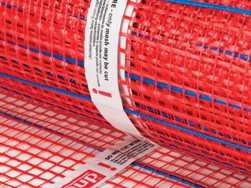 Underfloor heating is used as an addition to the heating system, for heating local areas of the floor, for example in the bathroom, or on the balcony. As well as the main type of heating, this method of use is less common. There are several types of implementation of this system, each has its own advantages and disadvantages. In this article we will look at how to make an electric heated floor with our own hands, and also consider the differences in the types of heating.
Underfloor heating is used as an addition to the heating system, for heating local areas of the floor, for example in the bathroom, or on the balcony. As well as the main type of heating, this method of use is less common. There are several types of implementation of this system, each has its own advantages and disadvantages. In this article we will look at how to make an electric heated floor with our own hands, and also consider the differences in the types of heating.
Most often it is installed in the kitchen and in the bathroom. The reason for this is the high humidity in these rooms, in addition, with high humidity, the cold is felt more strongly. When you leave the bath, it becomes much more pleasant to become on the warm floor than on a cold tile. And in the bathrooms of most apartments there are no heating radiators. Therefore, installing a warm floor will increase the overall temperature in the apartment. Often installed near pools, in baths, toilets ...
Methods and circuits for controlling a thyristor or triac
 Thyristors are widely used in semiconductor devices and converters. Various power sources, frequency converters, regulators, excitation devices for synchronous motors and many other devices were built on thyristors, and recently they are being replaced by transistor converters. The main task for the thyristor is to turn on the load at the time the control signal is applied. In this article we will look at how to control thyristors and triacs.
Thyristors are widely used in semiconductor devices and converters. Various power sources, frequency converters, regulators, excitation devices for synchronous motors and many other devices were built on thyristors, and recently they are being replaced by transistor converters. The main task for the thyristor is to turn on the load at the time the control signal is applied. In this article we will look at how to control thyristors and triacs.
Thyristor (trinistor) is a semiconductor semi-controlled key.Semi-controlled - means that you can only turn on the thyristor, it turns off only when the current in the circuit is interrupted or if a reverse voltage is applied to it. He, like a diode, conducts current in only one direction. That is, for inclusion in the AC circuit to control two half-waves, two thyristors are needed, for each one, although not always. The thyristor consists of 4 semiconductor regions (p-n-p-n) ...
Plasma lamps - how they are arranged and work
 An amazing sight is a plasma lamp. A sealed glass bulb with a single high-voltage electrode installed inside, surrounded by an inert gas under almost atmospheric pressure. High voltage (from 2000 to 5000 V) is supplied to the lamp electrode from one of the terminals of the secondary winding of a pulse transformer operating at a frequency of 30-40 kHz, which is installed inside the plastic lamp housing. A plasma lamp transformer is similar to a line transformer, which can be found on an old monitor or cathode-ray tube television.
An amazing sight is a plasma lamp. A sealed glass bulb with a single high-voltage electrode installed inside, surrounded by an inert gas under almost atmospheric pressure. High voltage (from 2000 to 5000 V) is supplied to the lamp electrode from one of the terminals of the secondary winding of a pulse transformer operating at a frequency of 30-40 kHz, which is installed inside the plastic lamp housing. A plasma lamp transformer is similar to a line transformer, which can be found on an old monitor or cathode-ray tube television.
High voltage ionizes the gas molecules (usually neon) inside the bulb - it turns out the plasma, hence the name of the lamp - "plasma lamp". Multiple discharges, similar to small lightnings, are generated by moving gas ions. The color of these lightnings dancing around the electrode inside the bulb can be different, which depends on the type of gases that make up the mixture with which the bulb is filled ...
How is difavtomat arranged and what is it used for
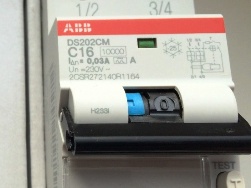 A differential automatic machine or differential circuit breaker is a device that combines two protective switching devices - an RCD and a circuit breaker. They are used in 220/380 Volt switchboards in everyday life and in production. In this article we will consider what a difavtomat is, how it is structured and where it is used.
A differential automatic machine or differential circuit breaker is a device that combines two protective switching devices - an RCD and a circuit breaker. They are used in 220/380 Volt switchboards in everyday life and in production. In this article we will consider what a difavtomat is, how it is structured and where it is used.
Difavtomats are used to protect wiring from overload, overcurrents, short circuit, as well as to protect a person from electric shock during leaks. Leaks can occur as a result of a breakdown into the body of electric heaters (heating elements), for example, in boilers - water tanks, electric ovens, stoves, washing machines or dishwashers, as well as aging or damage to insulation. All these problems can be localized by installing a device that compares currents between phase and zero, and if more flows through the phase ...
Outfit approval for work in electrical installations
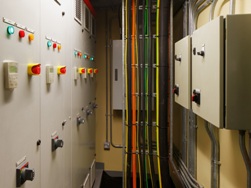 Today we’ll talk about something that many electricians who make wiring in apartments did not even hear about, but every day electrical workers in enterprises or organizations deal with this. When they are sent to carry out some types of tasks, they are preliminarily given an admission order for work in electrical installations. We will talk about what it is later in the article.
Today we’ll talk about something that many electricians who make wiring in apartments did not even hear about, but every day electrical workers in enterprises or organizations deal with this. When they are sent to carry out some types of tasks, they are preliminarily given an admission order for work in electrical installations. We will talk about what it is later in the article.
One of the main documents for an electrician is PBEEP or the Rules for the Safe Operation of Electrical Installations of Consumers. On it annually, and in the event of a break in work for more than 6 months or other situations, they often pass exams to obtain an electrical safety clearance group. Let's look at what is written in it, below is a screenshot from the text of this document. Admission order (outfit) - an order for the safe conduct of work drawn up on a special formdefining its content, place, start and end time ...
What are the types of LED strips
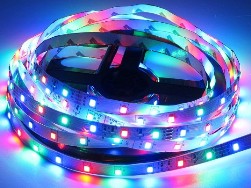 LED strips are popular because the simplicity and ease of working with them allow you to implement many ideas. Moreover, this can be done not only quickly, but also relatively cheaply and without special knowledge. Tapes easily bend and repeat the shape of the interior or objects. They can be used as a backlight and for basic lighting. In this article we will consider what kind of LED strips are.Device
LED strips are popular because the simplicity and ease of working with them allow you to implement many ideas. Moreover, this can be done not only quickly, but also relatively cheaply and without special knowledge. Tapes easily bend and repeat the shape of the interior or objects. They can be used as a backlight and for basic lighting. In this article we will consider what kind of LED strips are.Device
LED strip is a linear light source. Structurally, it is a flexible printed circuit board on an adhesive base. LEDs are located on it. It is cut into multiple segments along the cut line, it is applied between the pads. Depending on the number of LEDs per 1 meter, the cutting length is different. For example, for a 12V LED strip, the cutting ratio depends on the number of LEDs per meter - usually 3 pieces in a section ...
